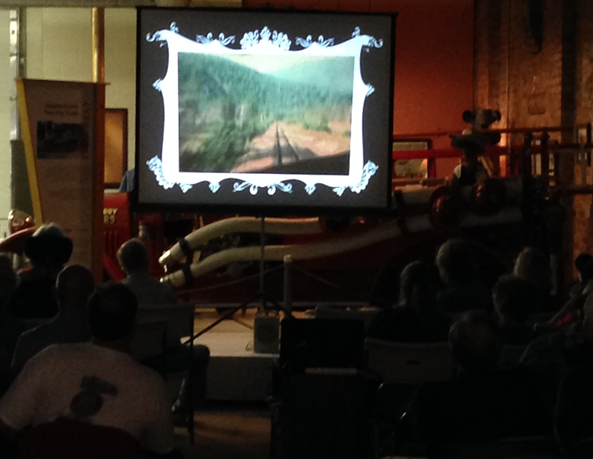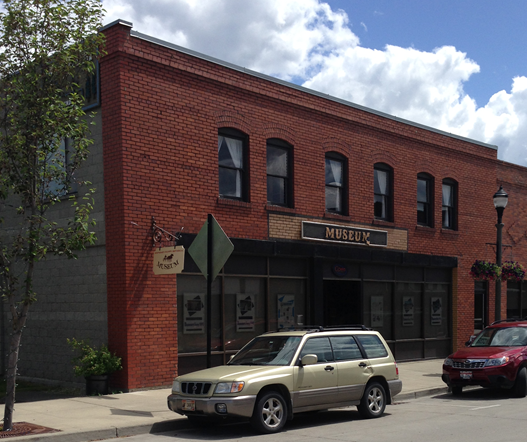Figuratively speaking, that is.
With a multimedia presentation using archive photographs, speakers, readings from the journals of pioneer county residents, and video footage shot in the 1960s by the engineer on a train trip from Eastport to Bonners Ferry, it was almost as if the audience were riding the rails back in time.
(story continues below photograph)

"Hear the Whistle Blowin' " was the name of the event that kicked off the summer season for the Boundary County Museum. The presentation covered the building and operation of railroad magnate James J. Hill's transcontinental Great Northern Railway, completed in 1893, which ran through Bonners Ferry, along with the 1905-1906 construction of the Spokane international Railway running from Spokane to Eastport.
And not to be left out, of course, was the sometimes quirky, sometimes kooky, but always beloved Kootenai Valley Railway, running between Bonners Ferry and Porthill. The Kootenai Valley Railway served its customers well along the west side of the county, but was known for not being the best at closely following a schedule, sometimes running just a couple of days a week. Further, it was not unusual for the KV line to pull up for an unscheduled stop en route from Porthill to Bonners Ferry, so the passengers and crew could stop to fish or hunt along the way.
Museum staff shared a journal reading from Mary Desmond, of one of the original pioneer families of the Crossport area of Boundary County. Mary wrote of the day when millionaire Great Northern CEO, James J. Hill himself, known around the United States as the "Empire Builder," rode through Bonners Ferry on his newly completed transcontinental railroad across the country. His train made a stop at Bonners Ferry, and Ms. Desmond made a point of describing in her journal how gracious and friendly Hill was as he met the citizens gathered to see him.
As the train ride back into history concluded, the audience passengers were escorted to the "Dining Car" area of the museum, where refreshments were available.
Library staff announced ongoing plans for their Railroad Courtyard, just beginning construction in the area behind the museum. New concrete is just starting to be laid down.
The Courtyard will include murals, flowers, and memorabilia from area railroads, having as its centerpiece a pavillion for relaxation and activities. Many have commmitted to or have already made donations toward the construction of the pavillion and the Railroad Courtyard, including a $16,000 grant from the BNSF Railway, and a large donation of lumber from the Idaho Forest Group's Moyie Springs lumber mill. Gene Andrews and Rod LePoidevin will be donating their time and construction skills. The BFHS Class of 1963, always actively involved in community service projects and donations, is also making a financial donation toward construction of the Railroad Courtyard.
Plans are for the project to be completed by this fall, with a grand opening and dedication ceremony planned around that time.
